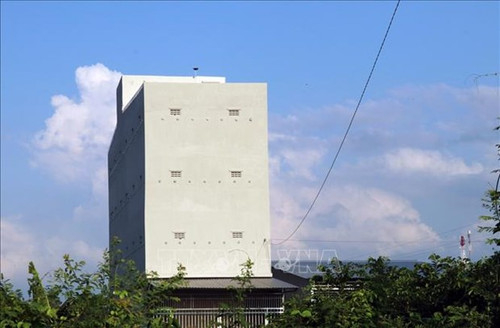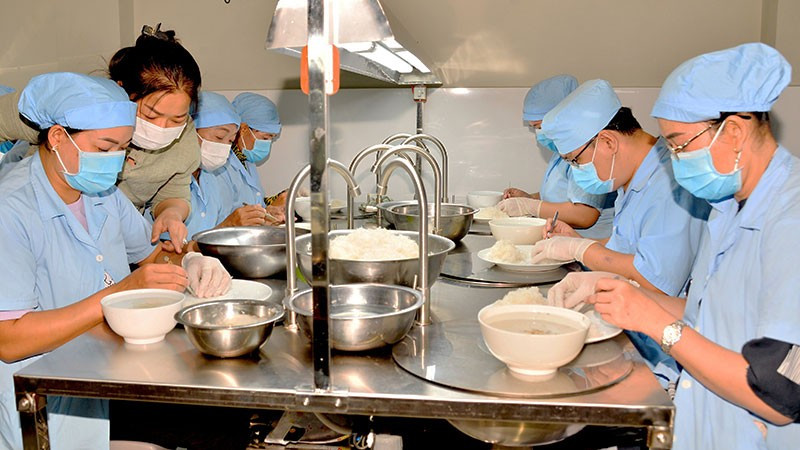The Mekong Delta province of Kien Giang has the largest shares of the 2,450 swiftlet farming facilities, with more than 2,295 swift houses covering a total area of 730,630 sq.m. Most of the swift houses are located in in Rach Gia City, Ha Tien City, and districts Chau Thanh, Hon Dat, and Kien Luong.
According to the Kien Giang Provincial Sub-Department of Animal Husbandry and Veterinary, Kien Giang is the country's leading province in swiftlet farming.
In 2022, the output of bird's nest harvest in the province reached more than 17.5 tonnes. The figure was estimated at 7 tonnes in the first half of this year.
Swallow nest farming has contributed to developing household economy and the agricultural sector in general, while increasing the brand of bird's nest from Kien Giang, said Nguyen Dinh Xuyen, deputy director of the provincial sub-department of animal husbandry and veterinary.
Owners of many bird nest farming households in Kien Giang have made bold investment in improving equipment, technology, and techniques in order to increase the quality of their bird's nest products.
Currently, raw bird's nests are sold at 16-17 million VND/kg, pre-processed bird's nests are priced from 24-25 million VND/kg, while high-quality bird's nests range from 30-35 million VND/kg.
Hoang Duc Nha, owner of Du Long bird's nest establishment in Rach Gia City, said that her family has eight swift houses, producing around 20 kg of edible bird's nests per month.
“Swiftlet farming has brought about significant profits to my family and many other households,” she stated.
 |
| A swallow nest farm in Kien Giang province (Photo: VNA) |
However, the Kien Giang Provincial Sub-Department of Animal Husbandry and Veterinary acknowledged that swiftlet farming has also revealed several shortcomings. Accordingly, an origin tracing system for bird's nest products has not yet developed.
In addition, many bird nest houses have low efficiency in operation as increases in the number of swiftlet houses are not in balance with the total flock. Furthermore, many of the houses are located in inner city areas, mostly in residential areas; and the noise of birds and machines used to attract them has caused much noise pollution to households in the neighbourhoods.
Targeting the sustainable development of bird's nest farming
On August 5, 2022, the Kien Giang Provincial People's Council issued Resolution No. 22/2022/NQ-HDND to regulate the areas where swallow nest farms are banned, and support owners of the violated nest farms to relocate their facilities.
The move aims to prevent environmental issues and ensure the sustainable development of the sector.
The provincial People's Committee then approved the project on sustainable livestock development for the 2021-2025 period and orientation to 2030.
Accordingly, the province targets that the output of bird's nest will reach 30-35 tonnes by 2025 and 35-40 tonnes by 2030.
The provincial People's Committee has directed the local Department of Agriculture and Rural Development to better the planning of farming areas in accordance with environmental ecological conditions, strictly ban swallow nest farms in crowded areas to develop in urban and residential areas.
The department is asked to organise technical training session for owners of swiftlet farming facilities in order to promote effective farming models while taking prompt solutions to protect the natural swiftlet population.
It is also requested to design a mechanism to manage and promote linkages between production, processing and consumption of bird's nest products to improve the products’ value and quality; and limit the massive development of birdhouses.
Kien Giang is the country's leading province in swiftlet farming. In 2022, the output of bird's nest harvest in the province reached more than 17.5 tonnes. The figure was estimated at 7 tonnes in the first half of this year.
The provincial authorities have invited investment in the construction of factories processing products from bird's nest, the building of a brand and certification for Kien Giang's bird's nest products that meet food safety and hygiene standards.
Businesses operating in the sector are provided with favourable conditions to participate in trade fairs, conferences, where they can advertise their products to potential customers, and search opportunities to expand their market.
Recently, the Minister of Agriculture and Rural Development signed the Protocol to officially export Vietnam bird's nest to China.
Tran Phuoc Ninh, Chairman of Kien Giang Salanganes Nest Association, said that the signing of the Protocol opens up development opportunities for Vietnam’s swiftlet farming industry.
He stressed that processing companies need to fully grasp the requirements and conditions for managing bird's nest farms and processing process to ensure disease safety, food safety, and traceability.
Kien Giang Province has coordinated with the Veterinary Department to popularise information and instruct the provincial Swiftlet Farming Association on implementing the above-mentioned protocol, focussing on disease monitoring and registration of swiftlet farming facilities.
Since March this year, 61 swiftlet farming facilities in the province have been selected to be place under monitor within 12 months to supply bird's nests for export to China, with an expected productivity of about 2-3 tons per year.
The owners of the facilities have proposed the provincial Cooperative Alliance to establish a cooperative on farming and export of bird's nests and develop bird's nest into a typical OCOP product of Kien Giang.
















